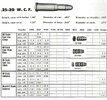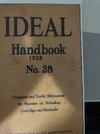HP38/W231 have always been the same powder. And if you were able to buy HP-38/W231 from the same lot, the only differences between them would be due to statistical variations. As an example, go shoot over a chronograph one lot of ammunition you reloaded. Record the mean, extreme spreads, standard deviations. The shot the same stuff again, the same number of shots is not important. Everything is the same, except your mean, extreme spreads, standard deviations are going to be a little different. In theory, you shoot a large enough sample size, like thousands, the numbers should get very close. But with small sample sizes, nah.
Now, you buy a can of HP-38 and another of W231, and if they are from different lots, the pressure curves will be different. All the powders we buy over the counter are blended to an average pressure curve, plus and minus 10%. You can look that up in a SAAMI spec. SAAMI allows average highs and average lows. You can see the issue in this image:
Due to this, and due to the fact reloading manuals were not buying HP-38 and W231 from the same lot, for decades manuals and gunwriters were able to hide that the powders were in fact, the same. I am quite sure there are lots of duplicate powders on the market, all in different colored bottles, under different brand names. But without sophisticated gas chromatography equipment and pressure gauges, how are we supposed to know?
Today Hodgdon has a licensing to use the Winchester name for gunpowders. Maybe more things. I have no idea of the full extent of the licensing agreement. Winchester is just a brand name, protected, used, licensed just as any other brand name. It is quite certain back in the 1980's that Hodgdon was buying the same powder from the same powder manufacturer, as commercial reloaders have posted that back then, all they had to do was peel off the HP-38 label, and underneath was a W231 mark.
I looked through older Lyman manuals, and probably some others, and I did not find many one to one comparisons of W231 with HP-38. On reflection, I believe the reason was, Hodgdon was not paying for it. I am 100% certain that Lyman calls up powder manufacturers every time they make a new manual and tells them there is a limited amount of space for each cartridge, and that if the powder manufacturer wants their powder on that page, they will have to pay. You see, reloading manuals are a form of advertisement. Reloaders see a list of powders, and one of those will be the powder that they buy.
In my 48th Lyman manual, I see lots more W296 and H110 loads for the same bullet and cartridge, than I do for W231/HP-38. I can only assume that was a Hodgdon business decision. We know now, W296/H110 were also the same. But Winchester and Hodgdon must have been making more profit from those powders, so they paid to have them listed more often.





